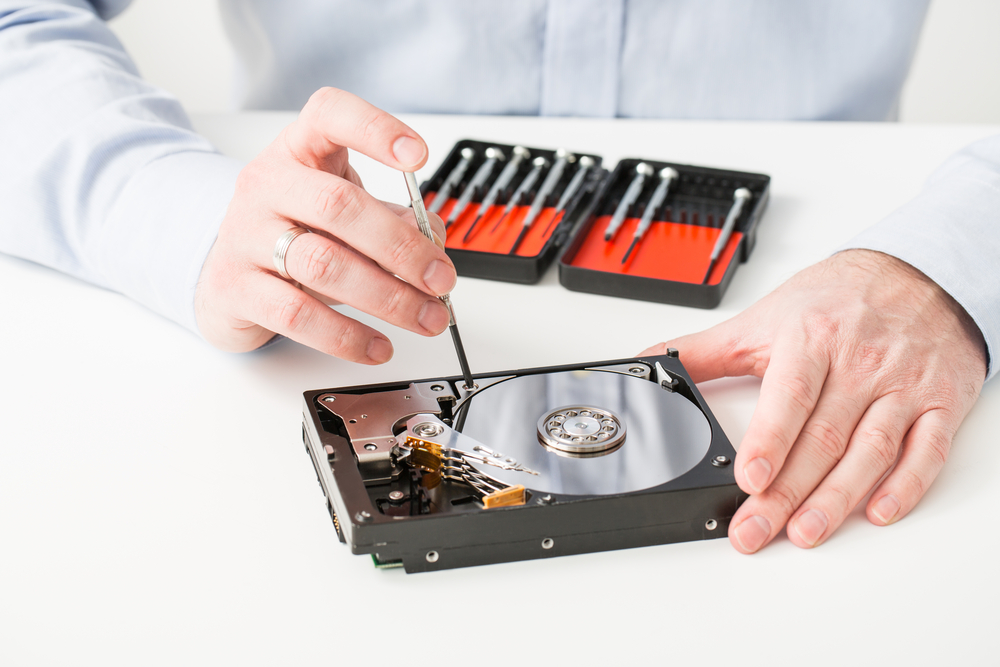A hard drive crash can be stressful, frustrating, and even nerve-wracking. Even if your data seems safe for the moment, you’re probably wondering how you’ll recover lost files in the future.
A failing hard drive can be a catastrophic failure. It can also be the result of a gradual, non-recoverable failure. Either way, your data is corrupted and unrecoverable. But don’t panic. There are steps you can take to prevent a hard drive crash, and steps you can take to safely and successfully recover your data using a hard drive data recovery service.
This guide will walk you through some of the most important steps in both recovery scenarios.
Back up your data
One of the most important steps to take when you start experiencing hard drive issues, or when your data is in danger of being lost, is backing up your data. You don’t want to end up in the same situation again
In order to back up your data, you can make a copy of your files and store them on an external hard drive. You can also purchase an online backup service that will automatically back up your data for you. This is a good way to save time, as well as eliminate the worry of remembering to make copies of your files yourself.
Unexpected failures are often sudden and unexpected. They can be caused by a physical problem with the storage device or by corruption that is evident before any hardware failure has occurred. In either case, you need to know what to do next.
If you have not backed up your data recently, take these steps:
– If possible, shut down your computer immediately
– Turn off any power sources such as phone chargers or extension cords from fridges
– Unplug all cables connecting peripheral devices (ie external hard drives)
– Open the terminal window on MacOS or Windows desktop
– Type “fsck -fy” into the terminal window and hit enter then type “y” when prompted
Manage your data
Before any attempt to recover data, it’s important to manage your data. You may have some files that you can access without any problem. Others may be corrupted and not worth the time and effort. There’s a chance you’ve already backed up the data you want to keep, but if not, now is the time to do so.
You should also make sure your hard drive doesn’t crash again in the future by getting a new one or making a few upgrades.
Encrypt your data
One of the most important steps in recovery is to encrypt your data. Encryption scrambles your data, making it unreadable without a key-a password or encryption key. You may not be able to recover the files on your hard drive, but you can use them as a backup and prevent future failures.
Check your backups
If you haven’t backed up your data, now’s the time to do it. Make sure you have at least two backups in different places. The first backup should be stored on-site in a safe place where it can’t be lost or damaged. The second backup should be stored off-site, such as on an external hard drive or cloud storage service.
A backup is essential for recovering from a hard drive crash because there are so many steps involved in properly recovering data from a failed hard drive. If you don’t have backups, the recovery process can take weeks or even months.
When it comes to backing up your files, there are plenty of options available to choose from: paper copies, CDs/DVDs, flash drives, external hard drives and more. Choose whichever option works best for you and your budget.
Reinstall your operating system
If your hard drive has failed and you are able to boot into Windows, the first thing you want to do is make sure that your operating system is up to date. If your hard drive is failing, there’s a chance that it’s not reading from the disk properly. This can lead to data corruption. In order to fix this, you’ll need to reinstall Windows and format the hard drive. All of the data on your hard drive will be lost, so make sure you have a recent backup before starting this process.
Safely remove your hard drive
First, you’ll want to safely remove your hard drive from your computer. You can do this by opening the front of your computer and pulling out the hard drive. You can then disconnect the cables that are connected to it or use a USB enclosure to access the data on it.
After consulting with a professional in data recovery, you may be instructed to take additional precautions before removing your hard drives like shutting down your computer first or deleting any data on the drive before taking it out.
Recover from a hard drive crash
If you’ve experienced a hard drive crash, your first step is to start looking for the cause. Check for any programs that are running in the background that might be interfering with the hard drive. If those don’t seem to be the issue, try shutting down and powering back on your computer before you move onto more drastic steps.
Now, look into recovering your files: if they can’t be recovered automatically, use a data recovery program like Data Rescue PC or Disk Drill Pro to scan your computer and find files that can be recovered. These programs function like digital archeologists–they retrieve information from corrupted sources and reconstruct it.
Conclusion
Losing data because of a hard drive crash can be a traumatic experience. But with the right knowledge, you can recover your data, salvage your hardware and move forward with a new backup plan. Follow these steps to safely recover your hard drive, and you’ll be back in business in no time.


